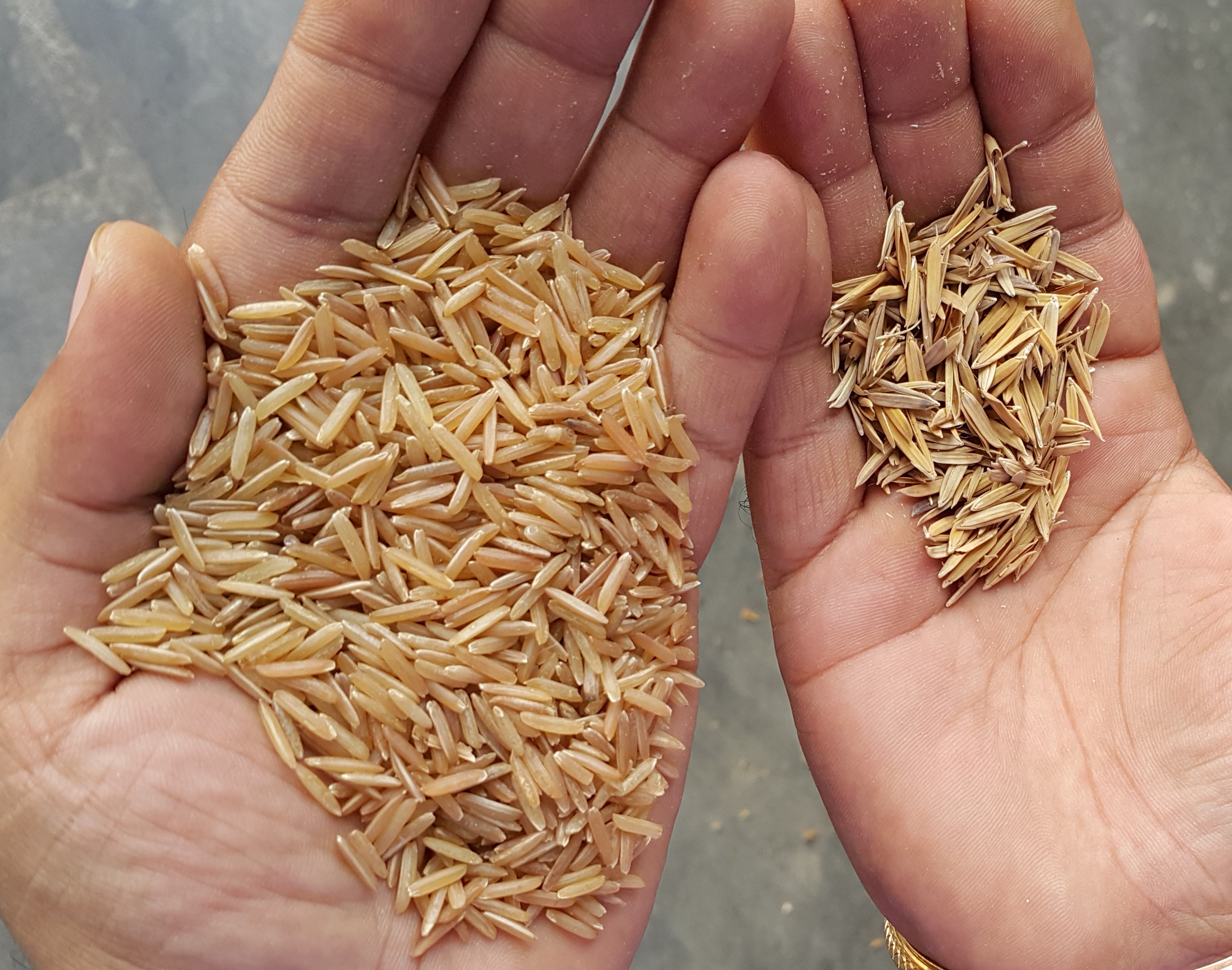Indian Basmati Rice, An Overview

- Haryana,
- Punjab,
- Western Uttar Pradesh,
- Delhi,
- Himachal Pradesh,
- Jammu and
- Uttarkhand (some parts)
 |
| Basmati seeds |
So far 29 varieties of Basmati rice have been notified under the seeds Act, 1966. Pusa stands for Pusa Institute in Delhi is a commonly referred name for the Indian Agricultural Research Institute (IARI) New Delhi. IARI is one of the premier research institutes of Indian Council of Agricultural Research, which comes under the Ministry of Agriculture, Govt. of India. It is headed and managed by India's top scientists who work continuously on maintaining optimal genetic pedigree of India's agricultural seeds. It is the developer of the most popular Pusa Basmati 1 and Pusa 1121 Basmati.
- Basmati rice is the longest grain rice as compare to any rice in the world.
- Basmati rice has unique characteristics of emitting aroma (Nutty flavor) due to Molecular compound present in the grain called 2-Acetyne 1-Pyrolene, when heavy sunlight passes in standing crop this compound has been released in the Rice field So it Requires cool temperature and that temperature only available in Indo gangetic plain and Himalayan Foothills.
- A typical Length of Basmati Rice is 6.61-7.5 mm, The Length to Width ratio is should be over 3 which means the grains must be slender.
- A typical color of Basmati Rce should be translucent creamy white, when cooking its length should be increased twice more and contain distinct aroma.
Basmati Processing
Basmati Rice is processed in two ways
- Raw Rice Milling
- Parboiled Rice
When the Basmati rice is Aged it become Bigger Length, Non Sticky and High Aroma Content and More firmy with fluffy texture than the Non Aged Rice.
Brown Basmati Vs White Basmati
| Basmati Rice Processing |
Like all rice, basmati rice is available in brown and white, with the white version produced by removing the bran (which is the outer husk or covering of each grain) from the brown version, as well as the germ, which is the seed that causes the rice plant to grow, leaving the white starchy portion.
Because bran provides dietary fiber and essential fatty acids, and the germ contains a number of nutrients, the brown version of basmati rice (and all rice) is generally considered healthier than the white version. Brown basmati also has a more nutty flavor and a firmer texture than white.
 |
| Basmati Rice Processing Plant |
| Exports |
India is the leading exporter of the Basmati Rice to the global market. The country has exported 44,54,656.70 MT of Basmati Rice to the world for the worth of Rs. 31,025.91 crores (or 4,330.68 US$ Mill.) during the year 2019-20. |



0 Comments